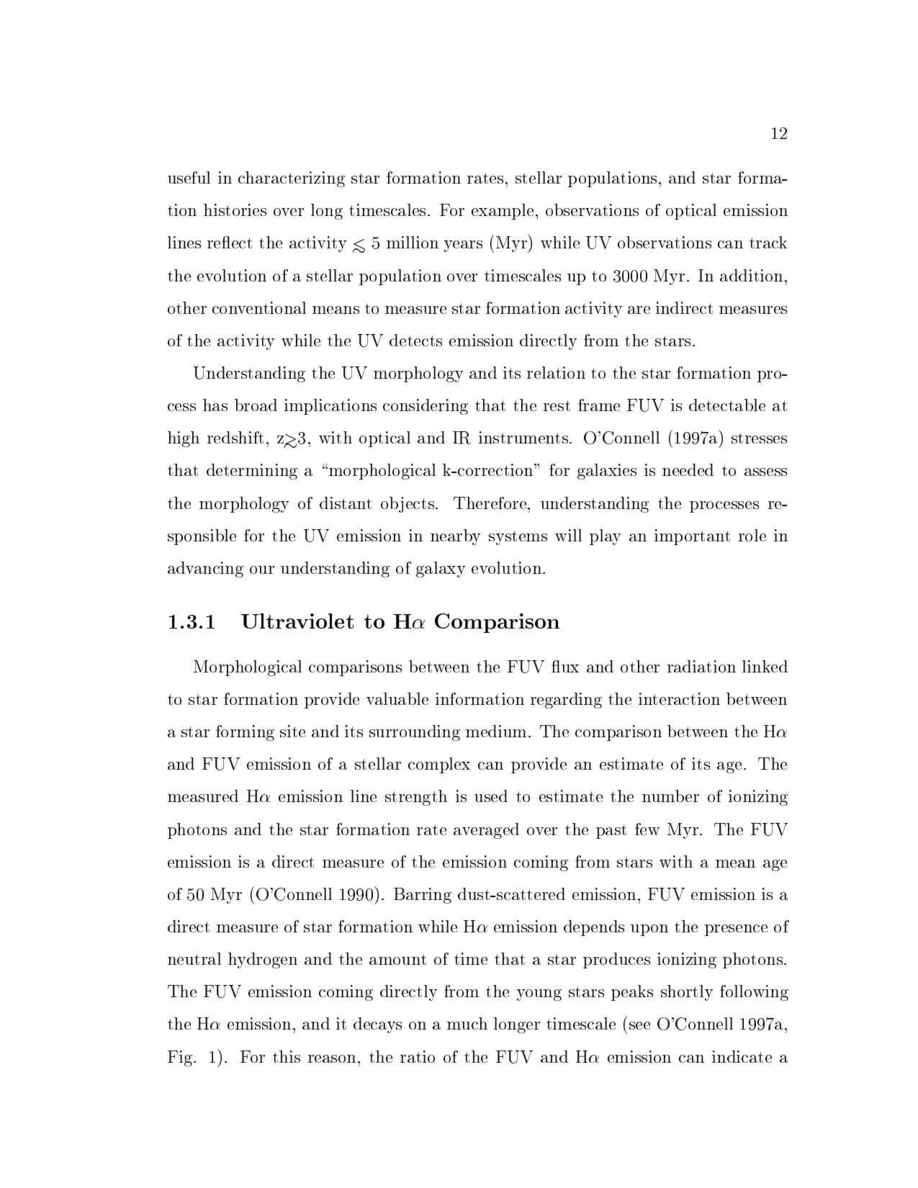
12
useful in characterizing star formation rates, stellar populations, and star forma-
tion histories over long timescales. For example, observations of optical emission
lines re ect the activity
5 million years Myr while UV observations can track
the evolution of a stellar population over timescales up to 3000 Myr. In addition,
other conventional means to measure star formation activity are indirect measures
of the activity while the UV detects emission directly from the stars.
Understanding the UV morphology and its relation to the star formation pro-
cess has broad implications considering that the rest frame FUV is detectable at
high redshift, z
3, with optical and IR instruments. O'Connell 1997a stresses
that determining a morphological k-correction" for galaxies is needed to assess
the morphology of distant objects. Therefore, understanding the processes re-
sponsible for the UV emission in nearby systems will play an important role in
advancing our understanding of galaxy evolution.
1.3.1 Ultraviolet to H Comparison
Morphological comparisons between the FUV ux and other radiation linked
to star formation provide valuable information regarding the interaction between
a star forming site and its surrounding medium. The comparison between the H
and FUV emission of a stellar complex can provide an estimate of its age. The
measured H emission line strength is used to estimate the number of ionizing
photons and the star formation rate averaged over the past few Myr. The FUV
emission is a direct measure of the emission coming from stars with a mean age
of 50 Myr O'Connell 1990. Barring dust-scattered emission, FUV emission is a
direct measure of star formation while H emission depends upon the presence of
neutral hydrogen and the amount of time that a star produces ionizing photons.
The FUV emission coming directly from the young stars peaks shortly following
the H emission, and it decays on a much longer timescale see O'Connell 1997a,
Fig. 1. For this reason, the ratio of the FUV and H emission can indicate a
